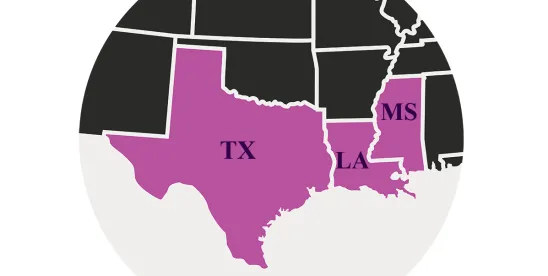While the Judge-made doctrine of equitable mootness continues to beguile and often stymie parties-in-interest seeking to appeal an order confirming a chapter 11 plan (as well as other orders which are on appeal prior to confirmation of a plan), appellants in the Fifth Circuit can continue to rest assured that the doctrine will be applied only as a “scalpel rather than an axe.” That is because in the Fifth Circuit, the doctrine—which can be described as a form of appellate abstention—is applied only on a claim-by-claim, instead of appeal-by-appeal basis. Bank of New York Trust Co., NA v. Official Unsecured Creditors’ Comm. (In re Pacific Lumber Co.), 584 F.3d 229, 240 (5th Cir. 2009). In the Fifth Circuit, “equity strongly supports appellate review of issues consequential to the integrity and transparency of the Chapter 11 process.” Hilal v. Williams (In re Hilal), 534 F.3d 498, 500 (5th Cir. 2008). That is because “the goal of finality sought in equitable mootness analysis does not outweigh a court’s duty to protect the integrity of the process.” Pacific Lumber, 584 F.3d at 252.
Applying these principles, the Fifth Circuit was recently asked in Highland Capital Management, L.P. to apply equitable mootness and abstain from reviewing, among other things, the exculpation provisions under the Debtors’ plan of reorganization. Nexpoint Advisors, L.P. v. Highland Capital Mgmt., L.P. (In re Highland Capital Mgmt., L.P.), 48 F.4th 419 (5th Cir. 2022). Notwithstanding its conclusion that the plan was substantially consummated, the Fifth Circuit ruled that the challenges were not barred by equitable mootness and reversed the bankruptcy court’s approval of the exculpation clause to non-debtors and limited the universe of parties covered by that provision.
The Opinion
The relevant facts of the case are as follows: Highland Capital Management, L.P. (the “Debtor”) was a Dallas based investment firm which operated for many decades. In October 2019, beset with unpaid judgments and liabilities, the Debtor was forced to file for protection under chapter 11 in the District of Delaware. No chapter 11 trustee was appointed in the case and the United States Trustee appointed a four-member Unsecured Creditors’ Committee (the “Committee”). Id. at 419. Upon the request of the Committee, the case was later transferred to the Bankruptcy Court for the Northern District of Texas. Id. The Committee reached a corporate governance settlement agreement to displace the co-founder, James Dondero (“Dondero”) from the board. Dondero stepped down as director and officer of the Debtor and agreed not to cause any of the related or affiliated entities to terminate any agreement with the Debtor. Id.
Notwithstanding the agreement, Dondero proposed several plans, each of which was objected to by the Committee and the Debtor’s three-person board of directors (the “Independent Directors”). In response, Dondero and certain other creditors began to frustrate the chapter 11 case by objecting to settlements, appealing orders, seeking writs of mandamus, interfering with the management of the Debtor, threatening employees and canceling trade between the Debtor and its clients. Id. The court ultimately entered an order sanctioning Dondero for his behavior. Id.
In August 2020, the Independent Directors filed the Fifth Amended Plan of Reorganization (the “Plan”), which included a broad exculpation clause that extended to nearly all bankruptcy participants: the Debtor and its employees and CEO; Strand Advisors, Inc.; the Independent Directors; the Committee; the successor entities and Oversight Board; professionals retained in the case; and all “Related Persons” (collectively, the “Protected Parties”). The Plan provided the Protected Parties with exculpations for any conduct in connection with, or arising from, the chapter 11 case, but excluded acts of gross misconduct, negligence, fraud and other acts constituting bad faith. Under these provisions, the bankruptcy court was to be the “gatekeeper,” from which any party that wished to assert a claim that interferes with the implementation or consummation of the Plan must first seek relief by showing that they have a colorable claim. The United States Trustee and Dondero objected to the scope of the exculpation—specifically, that the Plan exculpated certain non-debtors. Although certain modifications were made to the Plan, the bankruptcy court confirmed it over the objections.
After the Plan became effective, the Appellants[1] timely moved for and were granted a direct appeal to the Fifth Circuit. The Debtor moved to dismiss the appeal as equitably moot. The Fifth Circuit held the appeal was not barred by equitable mootness and reversed, in limited part, the breadth of the exculpation authorized under the Plan for the reasons discussed below.
Equitable Mootness
The Debtor sought to dismiss the appeal as equitably moot on the basis that the Plan was substantially consummated and became effective. It argued that the court should abstain from hearing the matter because to unwind the Plan would “generate untold chaos.” Id. In assessing equitable mootness, the Fifth Circuit analyzes three factors: “(i) whether a stay has been obtained, (ii) whether the plan has been ‘substantially consummated’, and (iii) whether the relief requested would affect either the rights of parties not before the court or the success of the plan.” Manges v. Seattle-First Nat’l Bank (In re Manges), 29 F.3d 1034, 1039 (5th Cir. 1994) (citing In re Block Shim Dev. Co., 939 F.2d 289, 291 (5th Cir. 1991)).
Before the Plan was substantially consummated the Appellants filed a motion for a stay pending the appeal, which the bankruptcy court denied. By the time the appeal was heard by the Fifth Circuit: the Debtor had already paid $2.2 million in claims to the Committee and $525,000 in cure payments to counterparties; the Independent Directors had resigned; the litigation and indemnity trusts under the Plan were funded; the class 1 creditor withdrew its claim against the Debtor; the class 2 creditor was paid approximately $500,000 and received a $5.2 million note secured by $23 million of the reorganized debtor’s assets; the class 3 and 4 claimants were paid approximately $165,000; and the class 7 creditors received $5.1 million in distributions from the Claims Trust.
In the Fifth Circuit, however, substantial consummation by itself does not trigger equitable mootness. See In re SCOPAC, 624 F.3d 274, 281–82 (5th Cir. 2010). Instead, the inquiry turns on whether the court can craft relief that would not have significant adverse consequences to the reorganization. The Debtor argued that there were four possible disruptions: (1) the newly created claimant trust and its entities could unravel; (2) the expense of disgorging disbursements; (3) the threat of defaulting on exit-financing loans; and (4) exposure to vexatious litigation.
As to the first element, the Debtor argued that a court cannot “surgically excise[]” certain provisions to the Plan, as the Appellants contended, because the Bankruptcy Code prohibits “modifications to confirmed plans after substantial consummation.” See 11 U.S.C. § 1127(b). The court disagreed, finding that it may fashion “fractional relief” to minimize the effect on the rights of third parties. The Appellants argued that equitable mootness did not apply to certain types of plans, like a liquidating plan, but the court also dismissed this argument, noting that it has conducted equitable mootness analyses for liquidating chapter 11 plans and not solely plans of reorganization. Instead, the court applied the claim-by-claim analysis to the main focus of the appeal which the Debtor contended were equitably moot: the exculpation provisions of the Plan.
The Protection Provision
There have recently been a number of hugely important cases addressing the permissibility of third-party releases (see e.g., In re Boy Scouts of America, 642 B.R. 504 (Bankr. D. Del. 2022) and Purdue Pharma, L.P., 635 B.R. 26 (S.D.N.Y. 2021)), but perhaps flying under the radar is the question of to what extent plan exculpation provisions are permissible. The typical exculpation provision releases specific parties from claims based on conduct in connection with, or arising out of, the bankruptcy case. Because of their more limited reach, exculpation provisions have not received the same attention as third-party releases.
Here, the Debtor argued that the exculpation provision was integral to the Plan because it contended that its officers, employees, trustees, and Oversight Board members would all resign rather than be exposed to litigation with Dondero and that the resignation of these key individuals would harm the Debtor’s reorganization efforts. Highland Capital Mgmt., L.P., 48 F.4th at 431.
The court held that under binding precedent (Pacific Lumber Co., 584 F.3d at 229), section 524(e) of the Bankruptcy Code bars exculpation provisions absent express authority found in another provision of the Bankruptcy Code. Section 524(e) provides that a “discharge of a debt of the debtor does not affect the liability of any other entity on, or the property of any other entity for, such debt.” 11 U.S.C. § 524(e). The court applied Pacific Lumber, which holds that section 524(e) does not permit “absolv[ing] the [non-debtor] from any negligent conduct that occurred during the course of the bankruptcy” absent another source of authority. 584 F.3d at 252–53; see also In re Zale Corp., 62 F.3d 746, 760 (5th Cir. 1995).
Pacific Lumber identified two sources of authority to exculpate non-debtors. The first is section 524(g) which channels asbestos claims (not present here). Pacific Lumber, 584 F.3d at 252. The second is section 1103(c), which provides a limited qualified immunity to creditors’ committee members for actions within the scope of their statutory duties. Id. at 253. A third exception has developed which provides a limited qualified immunity to bankruptcy trustees unless they act with gross negligence. In re Hilal, 534 F.3d at 501 (citing In re Smyth, 207 F.3d 758, 762 (5th Cir. 2000)).
In assessing the merits of the Appellant’s protection provisions claims, the Fifth Circuit reasoned that the bankruptcy court misread Pacific Lumber to include another exception—to permit exculpation of non-debtors when the record demonstrates that the “costs [a party] might incur defending against suits alleging such negligence are likely to swamp either [it] or the consummated reorganization.” Highland Capital Mgmt., 48 F.4th at 419 (citing Pacific Lumber, 584 F.3d at 252). The Fifth Circuit stated that it did not read Pacific Lumber to include this category and noted that because the Debtor failed to provide any additional statutory basis for extending the exculpation clause to non-debtors, the court declined to do so here. Accordingly, the Fifth Circuit narrowed the scope of the exculpation clause to exclude “related parties,” employees of the Debtor, the CEO of the Debtor, Strand Advisors, Inc., the reorganized debtor, HCMLP GP, LP, the claimant trust, the trustee of the claimant trust and professionals retained in the case. Id. at 438.
The Fifth Circuit did permit the exculpation clause to include the Independent Directors. This is because in the order appointing the Independent Directors, the bankruptcy court specifically provided that they were appointed to act together effectively as the bankruptcy trustee for the Debtor. Id. at 437. The Fifth Circuit ruled that under the Debtor’s governance structure, the bankruptcy court properly included the Independent Directors under the exculpation clause.
In contrast to its ruling on the exculpation provisions, the court upheld the Plan’s injunction and gatekeeper provisions. Although perhaps not perfectly clear from the opinion, it appears from the court’s reasoning that the gatekeeper provisions apply only to the Protected Parties as limited by the opinion (i.e., the Debtor, the Committee and its members and the Independent Directors). Nonetheless, it is unclear whether a gatekeeping provision applicable to non-exculpated parties would be held lawful. This is because the Fifth Circuit noted that there is a circuit split concerning the effect and reach of section 524(e). The Fifth Circuit and Tenth Circuit hold that section 524(e) categorically bars third-party exculpation absent express authority in another provision of the Bankruptcy Code. This is different from the Third Circuit, which follows the Second, Fourth, Sixth, Seventh, Ninth and Eleventh Circuits to read section 524(e) to allow varying degrees of limited third-party exculpations. Id. at 436.[2]
What are the implications of the Fifth Circuit’s ruling? First, the decision reveals yet another circuit split, this time concerning the scope of exculpation provisions. This is, of course, in addition to the circuit split concerning non-debtor third-party releases. Second, the extremely narrow scope of exculpation provisions permissible in both the Fifth and Tenth Circuits may dissuade large, and potentially contentious, Chapter 11 cases from being filed in those circuits in the first place, especially if alternative grounds for venue lay elsewhere in more “exculpation friendly” jurisdictions. Third, reorganization plans may now have to budget reserves to cover the costs for claims that would typically be exculpated, thus potentially diminishing creditor recoveries. Finally, the court’s ruling may dissuade interested parties from becoming involved in the reorganization process, at least without substantial, and most likely expensive, insurance to guard against post-confirmation claims.
FOOTNOTES
[1] The Appellants were comprised of Dondero, Highland Capital Management Fund Advisors, L.P. and NexPoint Advisors, L.P. (the “Advisors”), Highland Income Fund, NexPoint Strategic Opportunities Fund, Highland Global Allocation Fund, and NexPoint Capital, Inc. (collectively, the “Funds”), and the Dugaboy Investment Trust and the Get Good Trust (together the “Trusts”). Dondero, the Advisors, the Funds and the Trusts are collectively referred to as the “Appellants”).
[2] It should be noted that had the Debtors’ chapter 11 case remained in the District of Delaware—where it was originally filed—under Third Circuit precedent the exculpation clause likely would have remained intact.






 />i
/>i

